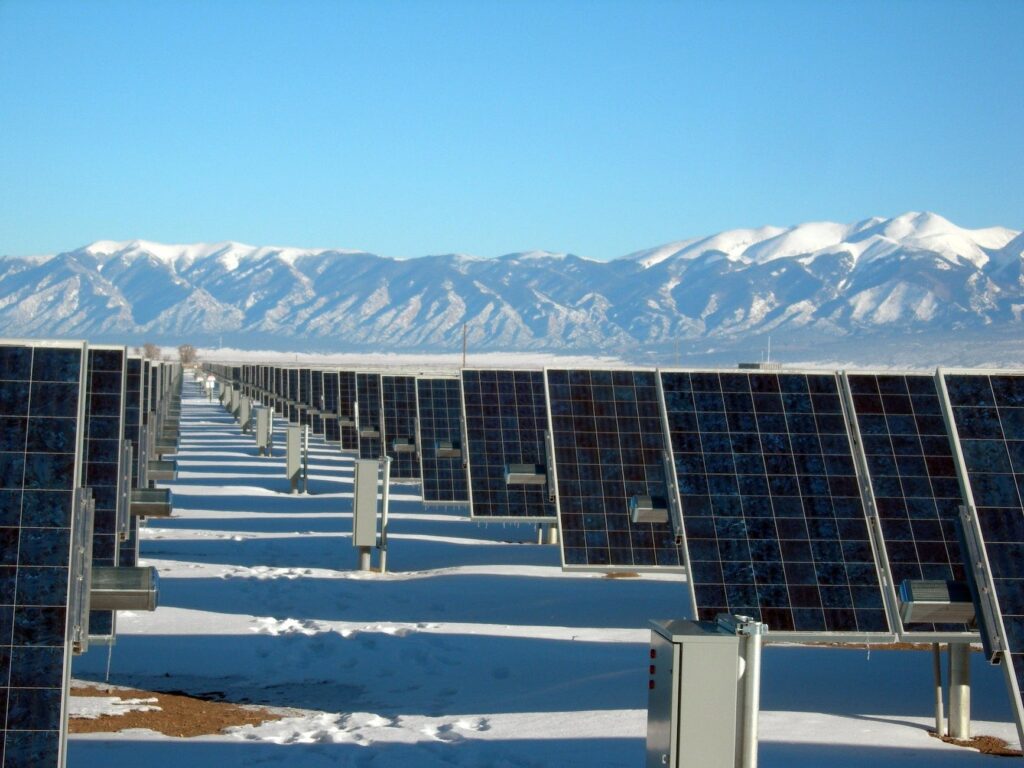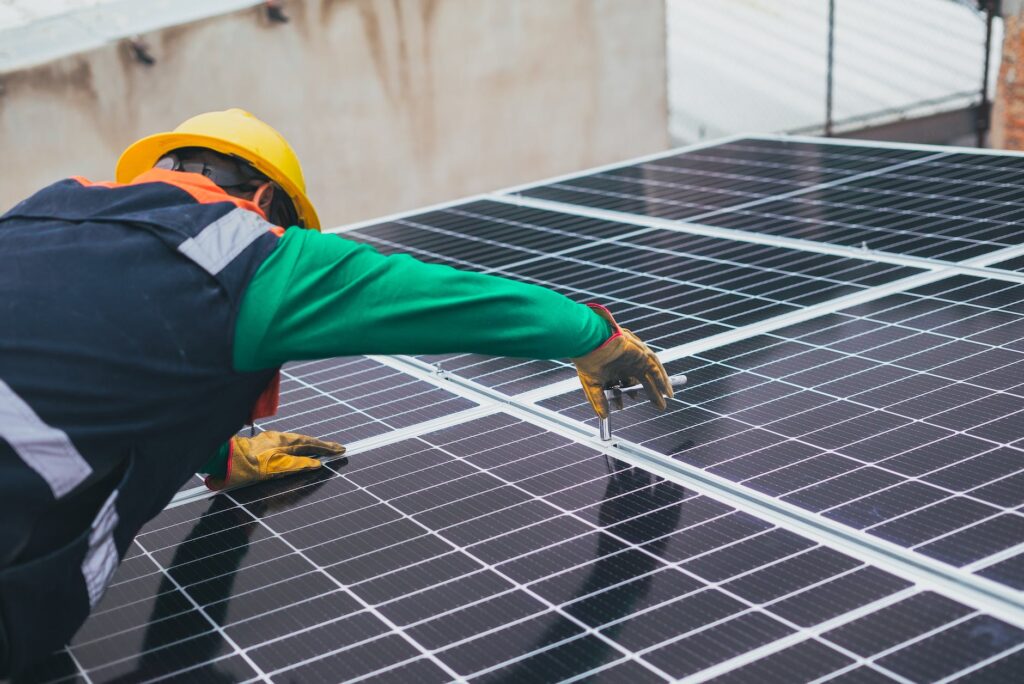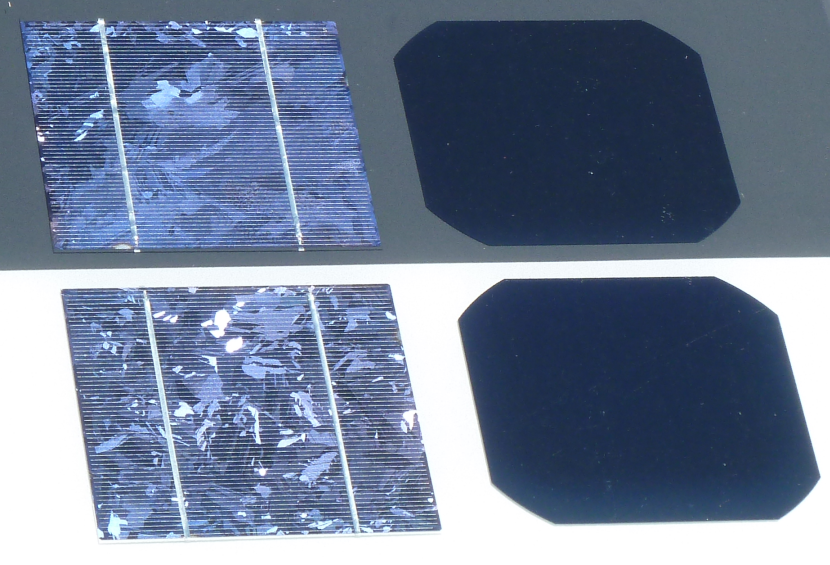Uncovering the Differences Between Polycrystalline & Monocrystalline Solar Panels
Welcome to our blog! Today, we’re going to delve into the differences between two types of solar panels: polycrystalline and monocrystalline. Solar energy is becoming increasingly popular and more and more households are investing in solar panels. But with all the different types of solar panels available, it can be overwhelming to make a decision. In this blog post, we will explore the differences between these two types of solar panels, so you can make an informed decision when you’re ready to invest in solar energy. Let’s get started!
What are Polycrystalline and Monocrystalline Solar Panels?

When it comes to making the decision between Polycrystalline and Monocrystalline solar panels, it’s important to understand the differences between the two. Monocrystalline solar panels are made from a single crystal of silicon and are the most efficient type of solar panel on the market. Monocrystalline solar panels have a higher efficiency rating and are generally more expensive than polycrystalline panels.
On the other hand, polycrystalline solar panels are made from multiple silicon crystals and are slightly less efficient than monocrystalline panels. Polycrystalline solar panels are generally less expensive than monocrystalline panels and are still highly efficient in producing energy when exposed to the same amount of sunlight.

The decision between Polycrystalline and Monocrystalline solar panels ultimately comes down to the individual’s budget, location, and energy needs. Monocrystalline solar panels are the most efficient and are generally more expensive than polycrystalline panels. However, polycrystalline solar panels still offer great energy efficiency and are more cost-effective for those on a budget.
No matter which type of solar panel is chosen, it’s important to remember that both types are highly efficient and capable of producing the same amount of energy when exposed to the same amount of sunlight. When making the decision between Polycrystalline and Monocrystalline solar panels, it’s important to consider the individual’s budget, location, and energy needs.
Advantages and Disadvantages of Pollycrystalline Solar Panels
Polycrystalline solar panels have some great advantages, but they also have a few drawbacks. For starters, they are less efficient than monocrystalline solar panels, which means they will require larger surface areas to generate the same amount of power.
Additionally, they tend to lose their efficiency more quickly over time, which will require more frequent maintenance.
On the other hand, Polycrystalline solar panels are cheaper than their monocrystalline counterparts, making them a great choice for those who are looking to save money while still getting the benefits of solar energy. They also tend to look better than monocrystalline panels, as they have a uniform shape and texture. Additionally, they are better suited for warmer climates as they perform better in high temperatures than monocrystalline solar panels.
In the end, the decision between Polycrystalline and Monocrystalline solar panels is a personal one. While Polycrystalline panels offer cheaper prices and a more aesthetically pleasing look, Monocrystalline panels provide greater efficiency and a longer life expectancy. Consider your budget, climate and aesthetic preferences when making the decision that’s right for you.
Advantages and Disadvantages of Monocrystalline Solar Panels
Monocrystalline solar panels are made from a single crystal of silicon. This type of solar panel is very efficient and has a high power output. Monocrystalline solar panels are generally more expensive than polycrystalline solar panels and are more efficient in general. The silicon used in monocrystalline solar cells is more pure and produces more electricity per square foot than polycrystalline cells.
Monocrystalline solar panels have a number of advantages. They are more efficient than polycrystalline solar panels and are able to produce more electricity in less space. Monocrystalline solar panels also last longer and have a higher surface temperature, meaning they are less likely to suffer from thermal runaway. Monocrystalline solar panels are also more aesthetically pleasing, as they have a consistent dark black colour.
While monocrystalline solar panels have many advantages, they are also not without their disadvantages. Monocrystalline solar panels require more space to install than polycrystalline solar panels, and they are also more expensive. Monocrystalline solar panels are also not as durable as polycrystalline solar panels, and they may require more maintenance.
When it comes down to it, the decision of which type of solar panel to install comes down to cost, efficiency, space, and aesthetic. Monocrystalline solar panels are more efficient and aesthetically pleasing, but they are also more expensive and require more space to install. Polycrystalline solar panels are more affordable and require less space, but they are also less efficient and less aesthetically pleasing.

Ultimately, the decision between the two types of solar panels should come down to what best fits your needs and budget.
Cost Considerations for Pollycrystalline and Monocrystalline Solar Panels
When it comes to powering your home with solar energy, there are two main types of solar panels: polycrystalline and monocrystalline. While both types of solar panel are an excellent choice for harvesting energy from the sun, there are some key differences between the two that you should consider before purchasing.
Cost is one of the most important considerations when deciding between polycrystalline and monocrystalline solar panels. Generally speaking, polycrystalline panels are less expensive than monocrystalline panels. This is because they require fewer high-quality silicon cells, making them easier and cheaper to manufacture. However, monocrystalline panels are slightly more efficient, meaning they generate more energy with the same number of cells.
The efficiency level of a solar panel is an important factor to consider when making a purchase. Monocrystalline panels are generally more efficient than polycrystalline panels, meaning they generate more energy for the same number of cells. However, polycrystalline panels are still a good choice if you’re looking for an affordable option.
The life expectancy and durability of both types of solar panels is another important factor to consider. Monocrystalline panels are generally more durable than polycrystalline panels, and they have a longer lifespan. This makes them a better option for areas with extreme weather conditions, such as high winds or hail.
When it comes to advantages and disadvantages, both types of solar panel have their own pros and cons. Monocrystalline panels are more efficient and have a longer lifespan, but they’re also more expensive. Polycrystalline panels, on the other hand, are cheaper but less efficient and have a shorter lifespan.
Ultimately, the type of solar panel you choose will depend on your individual needs and budget. If you’re looking for an affordable option, polycrystalline panels may be your best bet. If you’re looking for a more efficient solution, monocrystalline panels may be the way to go.
Factors to Consider When Choosing Between Pollycrystalline and Monocrystalline Solar Panels
When it comes to solar panel technology, there are two main types to consider: polycrystalline and monocrystalline. Both of these offer unique benefits and drawbacks, making it important to understand the differences between them in order to make the best decision for your energy needs.
Polycrystalline solar panels are made up of multiple smaller solar cells arranged in a jigsaw-like pattern. They are relatively inexpensive to manufacture, making them an attractive option for those on a budget. They also require less space than monocrystalline solar panels, making them a great choice for smaller homes and businesses. However, due to their lower efficiency, polycrystalline solar panels are not as effective in low-light conditions and can be more susceptible to environmental factors such as dust, wind, and dirt.
Monocrystalline solar panels are made up of a single, uniform solar cell. This makes them more efficient than polycrystalline solar panels, meaning they can produce more energy with the same amount of space. However, monocrystalline solar panels are more expensive to manufacture, making them a more costly option. They are also more sensitive to environmental factors, meaning they may require more regular cleaning and maintenance.
When choosing between polycrystalline and monocrystalline solar panels, it is important to consider your budget, the size of the space, and your energy needs. Monocrystalline solar panels can be more expensive initially, but they may be more cost-effective in the long run due to their higher efficiency. Polycrystalline panels may be a better choice if you have limited space, but they may not meet your energy needs as well.
By understanding the differences between polycrystalline and monocrystalline solar panels, you can make an informed decision that best meets your energy needs and budget. With the right combination of knowledge and research, you can find the perfect solar panel for your home or business.
Overview of Pollycrystalline and Monocrystalline Solar Panels
When it comes to installing solar panels, it is important to understand the differences between Polycrystalline and Monocrystalline solar panels. Both types of solar panels offer their own unique advantages and disadvantages, so it is important to consider the right option for your specific needs.
Polycrystalline solar panels are well known for their efficiency and performance in low light conditions. This type of solar panel is made from multiple small silicon crystals, which are fused together to form one large crystal. This type of solar panel is typically less expensive than Monocrystalline solar panels due to the production process.
Monocrystalline solar panels, on the other hand, are made from a single large silicon crystal. This type of solar panel has a higher power output and is more durable than Polycrystalline solar panels. In addition, Monocrystalline solar panels are more aesthetically pleasing and offer a sleeker look.
It is important to consider the pros and cons of both types of solar panels before making a decision. Take into account factors such as the cost, performance, and aesthetics to determine the best option for your needs.

